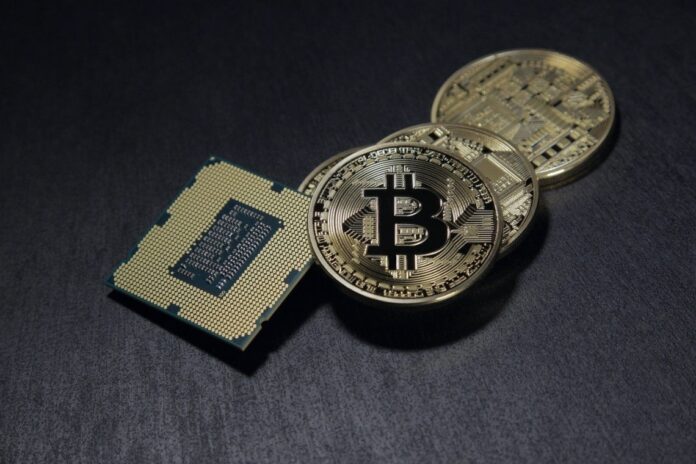In recent days, the price correlation level between Bitcoin and the Nasdaq stock index has reached its lowest level in 2 years.
The king of the crypto market is moving increasingly differently from U.S. stocks, all the more so for those belonging to the tech world, which during the crypto bear market have performed decidedly well.
Is this disengagement from the logic of the U.S. stock markets a good thing for Bitcoin or is it to be perceived as a negative factor?
Let’s look at all the details below.
Summary
Bitcoin and Nasdaq: minimal correlation between prices
Over the past month, the price of Bitcoin is up about 25% while the Nasdaq shows a less pronounced increase of 9.73%, highlighting a divergence in the correlation between the two assets.
This is not the first time such a situation has occurred: historically, the crypto market’s top currency has alternated between moments of strong connection with U.S. indices and periods when its price action has gone completely on its own.
For much of 2020 the price correlation between Bitcoin and Nasdaq was very pronounced while by 2021 we saw a totally opposite trend.
In 2022 months of affinity were followed by periods of very pronounced price action decoupling, until from May 2023 onward we observed a clear trend in this metric.
In fact, the correlation between digital gold and the U.S. stock exchange index has been increasingly fading until it reached -0.20%, typically indicative of two totally disconnected charts.
Think about the fact that this level had not been touched since August 2021, when the price of Bitcoin was exploding to the upside in the second bullish phase of that year’s bull run, while the Nasdaq was growing at a much slower pace.
We can observe the same situation, but with a much more pronounced picture, in the relationship between the price of Bitcoin and the price of U.S. tech stocks.
Compared to Alphabet, Amazon, Apple, Intel, Meta, Microsoft, Nvidia, and the rest of the tech stocks, Bitcoin’s performance in the markets is increasingly different and sees a 60-day average correlation currently at the 12.8% level, at its lowest level in two years.
Until March 2023 this value was 40% higher and in September 2023 it was 60%.
In and of itself, this data means nothing other than that Bitcoin has finally reached a level of maturity such that it is trading according to a consistency all its own, different from the reasons that drive the listed markets.
It will be interesting to monitor this in the coming months to see if this trend will be even more pronounced or will give way until it returns to levels considered “normal” according to the cryptocurrency’s history.
For now, seeing the graph of the cryptocurrency, we can say that this correlation situation, as happened in the height of the summer of 2021, is creating a positive environment for price growth.
Also note how Bitcoin right now is moving very close to the performance of safe haven assets such as gold, as also happened in April and February of this year.
The overall outlook for Bitcoin
Bitcoin closed last week with its price above $37,000, clearly in much better shape than equity indices such as the Nasdaq and S&P 500, which despite registering slight price increases cannot hold a candle to the king of the crypto market.
Bitcoin’s capitalization stands at $666.9 billion with volumes in the last 24 hours hovering around $18.5 billion, up 35% from yesterday.
The coin’s dominance, currently at 49.36%, appears to be heading into a bullish season, typical of pre-bull run periods, when the index of BTC’s dominance initially rises solo and then later gives way to the rest of the altcoin sector.
The same scenario was observed in late 2019/early 2020 where Bitcoin dominance reached the 70% threshold before beginning a slow descent to 40% in May 2021 when the so-called altseason broke out.
On the derivatives market front, traders’ interest in October and November became much more substantial, so much so that the coin’s daily open interest reached an all-time high at $16.5 billion.
Compared to January 2023, the sum of contracts not yet closed here represented a value more than 6 times lower than it is today.
All of this contributes to a positive outlook for Bitcoin and all other crypto assets, which are seeing active participation in buying and selling in recent days with institutional interest growing in this market.
The enthusiasm of financial traders for the likely coming approval of a spot etf for Bitcoin is giving the right boost to crypto prices, which may have already discounted such an event in advance, however.
At the moment the situation still remains uncertain, although the odds play in favor of a bullish continuation of BTC.
In any case, the market now has to contend with spot market volumes that are as insubstantial and unable to explode as those in the futures/options niches, and with a macroeconomic picture that is still less than encouraging.
Before the start of the real bullish market that will open the door to a new all-time high for Bitcoin, a few months of slight pain may pass.




